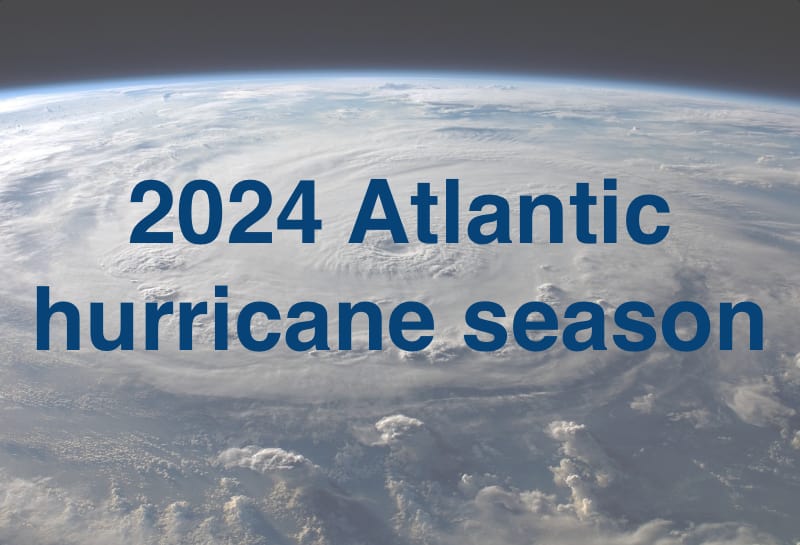CSU maintains forecast for extremely active hurricane season with elevated landfall risk

Colorado State University’s tropical meteorology team has maintained its forecast for an extremely active 2024 Atlantic hurricane season, still calling for 23 named storms, 11 hurricanes and 5 major hurricanes, while citing an expectation of elevated landfall risk, that La Niña conditions will emerge and also highlighting record warm sea surface temperatures (SST’s).
Notable for the insurance, reinsurance, catastrophe bond and insurance-linked securities (ILS) markets, the CSU forecast team continue to caution of “a well above-average probability for major hurricanes making landfall,” including for the United States coastline.
The CSU team had issued their early forecast back in April and see no reason to reduce the numbers given, despite the fact the season has now begun.
The forecast from CSU still calls for 23 named tropical storms to form in the Atlantic during the season from June 1st to November 30th.
11 of those are forecast to become hurricanes, with 5 of those forecast to become major hurricanes with Category 3 sustained wind speeds of 111 mph or greater, while accumulated cyclone energy (ACE) for the 2024 hurricane season is still seen as reaching 210.
They explain, “We have maintained our forecast for an extremely active Atlantic hurricane season in 2024.
“We anticipate that La Niña conditions will develop by the peak of the Atlantic hurricane season, likely resulting in reduced levels of tropical Atlantic vertical wind shear.
“Sea surface temperatures averaged across the hurricane Main Development Region of the tropical Atlantic and Caribbean remain at record warm levels. Extremely warm sea surface temperatures provide a much more conducive dynamic and thermodynamic environment for hurricane formation and intensification.”
They also note that the forecast comes with “above-normal confidence for an early June outlook.”
Additionally warning that, “We anticipate a well above-average probability for major hurricanes making landfall along the continental United States coastline and in the Caribbean.”
This forecast team continues to give a 62% chance of major hurricane landfall for the entire U.S. coastline (average from 1880–2020 is 43%), a 34% probability of major landfall for the U.S. East Coast, including the Florida peninsula (average from 1880–2020 is 21%), and a 42% chance of major hurricane landfall for the Gulf Coast from the Florida panhandle westward to Brownsville (average from 1880–2020 is 27%).
In addition, they say there is a 66% probability of a major hurricane tracking through the Caribbean (average from 1880–2020 is 47%).
The transition to neutral ENSO conditions in the Pacific is seen as “imminent” with La Nina by the peak hurricane season, which will reduce wind shear and make conditions more conducive to tropical development and intensification.
Already the forecast models have been showing phantom storms, including one hurricane in the Gulf for a couple of weeks out, but this is quite typical of models at longer ranges.
However, the NHC is currently cautioning of a 20% chance of tropical development off the US southeast coast, as a system of thunderstorms and torrential rain moves across Florida and emerges into the Atlantic later this week.
The rainfall forecasts suggest totals in the double digit inches are possible, so even absent tropical storm formation Florida is in for a soaking and a chance of flooding over the coming days.
With no change to the CSU hurricane forecast at this June update, our Artemis Average forecast for the 2024 hurricane season remains for 23 named storms, 12 hurricanes, 5 major hurricanes, with a seasonal ACE Index score of 218.
Track the 2024 Atlantic tropical storm and hurricane season on our dedicated page and we’ll update you as new information emerges.






